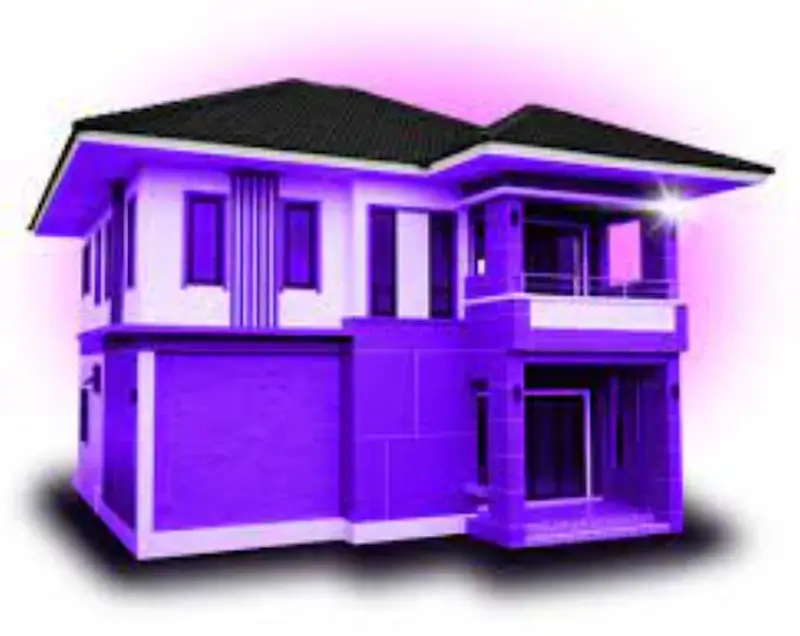In the bustling cityscape of Chicago, where architectural marvels stand tall and proud, one iconic structure has etched its name in history – the Home Insurance Building. A testament to innovation and resilience, this skyscraper not only dominates the skyline but also underscores the importance of safeguarding your assets through comprehensive insurance coverage.

Table of Contents
Home Insurance Building: Secure Your Property Today
The Origin and Significance of Home Insurance Building
Constructed in the late 19th century, the Home Insurance Building holds the distinction of being the world’s first skyscraper. Designed by the visionary architect William Jenney, this architectural masterpiece paved the way for modern urban landscapes. Its towering presence symbolizes progress and ingenuity, a constant reminder of the city’s relentless spirit.
Unraveling the Architecture
The Home Insurance Building, with its skeletal steel frame, marked a departure from conventional construction methods. This pioneering approach not only revolutionized the Chicago skyline but also laid the foundation for skyscraper engineering worldwide. Understanding the construction nuances of such architectural wonders becomes pivotal in comprehending the associated insurance dynamics.
Insurance for Buildings: Navigating the Chicago Landscape
In the realm of insurance, safeguarding your property transcends the ordinary. Building insurance becomes paramount, especially in a city like Chicago, where the skyline is dotted with structures echoing architectural prowess. Whether you own a residential abode or a commercial space, the need for robust insurance coverage cannot be overstated.
Decoding the Jargon: Buildings and Contents Insurance
When delving into the intricacies of insurance, terms like buildings and contents insurance often surface. This comprehensive coverage encapsulates protection for both the physical structure of your property and its internal contents. From the structural integrity of your building to the cherished possessions within, a holistic approach ensures a safety net against unforeseen perils.
The Chicago Home Insurance Building: An Emblem of Assurance

Nestled within the heart of Chicago, the Home Insurance Building stands not just as an architectural marvel but also as a symbol of reassurance for property owners. Securing this historical building itself involves meticulous planning and adherence to stringent building codes – a testament to the commitment to safety and longevity.
Unveiling the Code: Navigating Residential Building Insurance
Understanding the local building code is a pivotal step in obtaining the right insurance for your residential property. Compliance with these codes ensures that your dwelling is not only structurally sound but also aligns with safety standards. Insurance providers often consider adherence to building codes a criterion for determining coverage and premiums.
Chicago Home Insurance: Unraveling Quotes and Coverage
As the city evolves, so do the dynamics of insurance. Securing your home or commercial space in Chicago necessitates a keen eye for detail, especially when exploring insurance quotes. The process involves:
- A meticulous comparison of offerings.
- Delving into the nuances of coverage.
- Ensuring that the chosen plan aligns seamlessly with your unique requirements.
Navigating the Online Realm: Quotes at Your Fingertips
In an era dominated by digital convenience, obtaining insurance quotes has become a seamless online endeavor. The ability to compare various options at the click of a button empowers property owners to make informed decisions. However, in this digital landscape, it is crucial to sift through the plethora of information and choose a policy that not only fits your budget but also provides comprehensive coverage.
Contents Insurance: Protecting Your Valuables
While the structural integrity of your property is paramount, the importance of contents insurance should not be underestimated. This facet of insurance extends a protective shield to your personal belongings, mitigating the financial impact of potential losses.
The Essence of Coverage: Home Insurance Explained
Home insurance, often synonymous with property insurance, is a multifaceted shield against unforeseen circumstances. It encompasses a spectrum of coverage, ranging from structural damage due to natural disasters to protection against theft and vandalism. A nuanced understanding of what your policy entails is fundamental in ensuring that you are adequately protected.
Cheap Home Insurance Quotes: Balancing Affordability and Coverage

In the pursuit of insurance, the term cheap home insurance quotes often resonate with property owners. Striking a delicate balance between affordability and comprehensive coverage is an art. The competitive landscape of insurance providers in Chicago facilitates options that cater to a spectrum of budgets.
Unveiling the Economic Aspect: Savings in Home Insurance
Contrary to common perception, saving on home insurance is not solely about securing the cheapest policy available. It involves a strategic approach, understanding the intricacies of your property, and tailoring the insurance coverage accordingly. An informed decision ensures that you not only save on premiums but also receive optimal protection.
The Evolution of Chicago’s Home Insurance Landscape
Chicago, a city that breathes history and innovation, has seen a metamorphosis in its home insurance landscape. From the pioneering days when the Home Insurance Building rose to prominence to the contemporary era of digital quotes and tailored coverage, the evolution mirrors the city’s dynamic spirit.
A Glimpse into History: Chicago’s Home Insurance Building
Historical photographs of Chicago’s Home Insurance Building transport us back to an era of architectural audacity. The juxtaposition of these images with the present-day skyline offers a poignant reflection on the city’s growth. Likewise, the evolution of insurance for homes and buildings reflects the changing needs and aspirations of property owners.
Conclusion: Safeguarding Your Haven in the Windy City
In the labyrinth of Chicago’s architectural wonders, the Home Insurance Building stands as a sentinel, reminding us of the importance of securing our abodes. As you embark on the journey of insuring your property, let the lessons from history guide you. Navigate the landscape with a discerning eye, delve into the intricacies of coverage, and ensure that your haven in the Windy City remains safeguarded for generations to come.
Frequently Asked Questions (FAQs) about the Home Insurance Building in Chicago
What style was the Home Insurance Building in Chicago?
The architectural style of the Home Insurance Building in Chicago is recognized as the Chicago School. Emerging in the late 19th century, this style is characterized by the pioneering use of a steel frame structure, large windows, and the abandonment of traditional load-bearing walls. The Chicago School’s emphasis on functionality and simplicity laid the groundwork for the modern skyscraper.
Which building is considered the first skyscraper?
Regarded as the world’s first skyscraper, the Home Insurance Building in Chicago, completed in 1885, is a groundbreaking example of architectural innovation. Its distinctive features, such as the steel skeleton frame, challenged conventional building practices and set new standards for vertical construction.
What was the first skyscraper answer?
The answer to the query about the first skyscraper invariably points to the Home Insurance Building in Chicago. Designed by the visionary architect William Jenney and completed in 1885, it marked a pivotal moment in architectural history, symbolizing the shift towards towering structures that define modern cityscapes.
What is considered a skyscraper?
A skyscraper is generally defined as a tall building with a significant number of floors. While specific height thresholds may vary, skyscrapers typically stand out in urban landscapes due to their height, often exceeding the surrounding structures. These buildings serve various purposes, including housing offices, residential units, or commercial spaces.
Who made the Home Insurance Building in Chicago?
The credit for the creation of the Home Insurance Building in Chicago goes to the innovative architect William Jenney. His ingenious use of a steel skeleton as the primary structural support defied conventional construction methods and laid the foundation for the skyscrapers that would follow.
Why is Chicago architecture so famous?
The fame of Chicago’s architecture is rooted in its revolutionary contributions during the late 19th and early 20th centuries. Architects like Jenney and Sullivan, associated with the Chicago School, pioneered advancements such as the steel frame, large windows, and functional design. Chicago’s skyline became a testament to modernity, influencing architectural practices globally.
Is the Home Insurance Building in Chicago called the father of the skyscraper?
Yes, the Home Insurance Building in Chicago is often affectionately referred to as the “father of the skyscraper.” This moniker acknowledges its pivotal role in shaping the future of architectural design, particularly the vertical expansion of urban structures.
What year was the Home Insurance Building?
The construction of the Home Insurance Building was completed in 1885, forever marking that year as a turning point in architectural history.
What was the purpose of the Home Insurance Building?
The Home Insurance Building served a dual purpose as the headquarters of the Home Insurance Company and as a pioneering example of functional office space. Beyond its utilitarian role, it became a symbol of architectural innovation, proving that tall structures could be both aesthetically pleasing and structurally sound.
What other building innovations did the Home Insurance Building debut?
In addition to being the first skyscraper, the Home Insurance Building introduced the groundbreaking concept of a steel frame as the primary structural support. This departure from traditional load-bearing walls allowed for greater height, ushering in a new era of architectural possibilities and influencing the construction of tall buildings worldwide.
How was the Home Insurance Building fireproof?
The Home Insurance Building incorporated cutting-edge construction techniques to enhance its fireproof capabilities. The use of fire-resistant materials, including masonry and iron, was a deliberate choice aimed at mitigating the risks associated with fire, a prevalent concern in tall structures during that era. This commitment to safety further solidified the building’s reputation as a trailblazer in both form and function.




